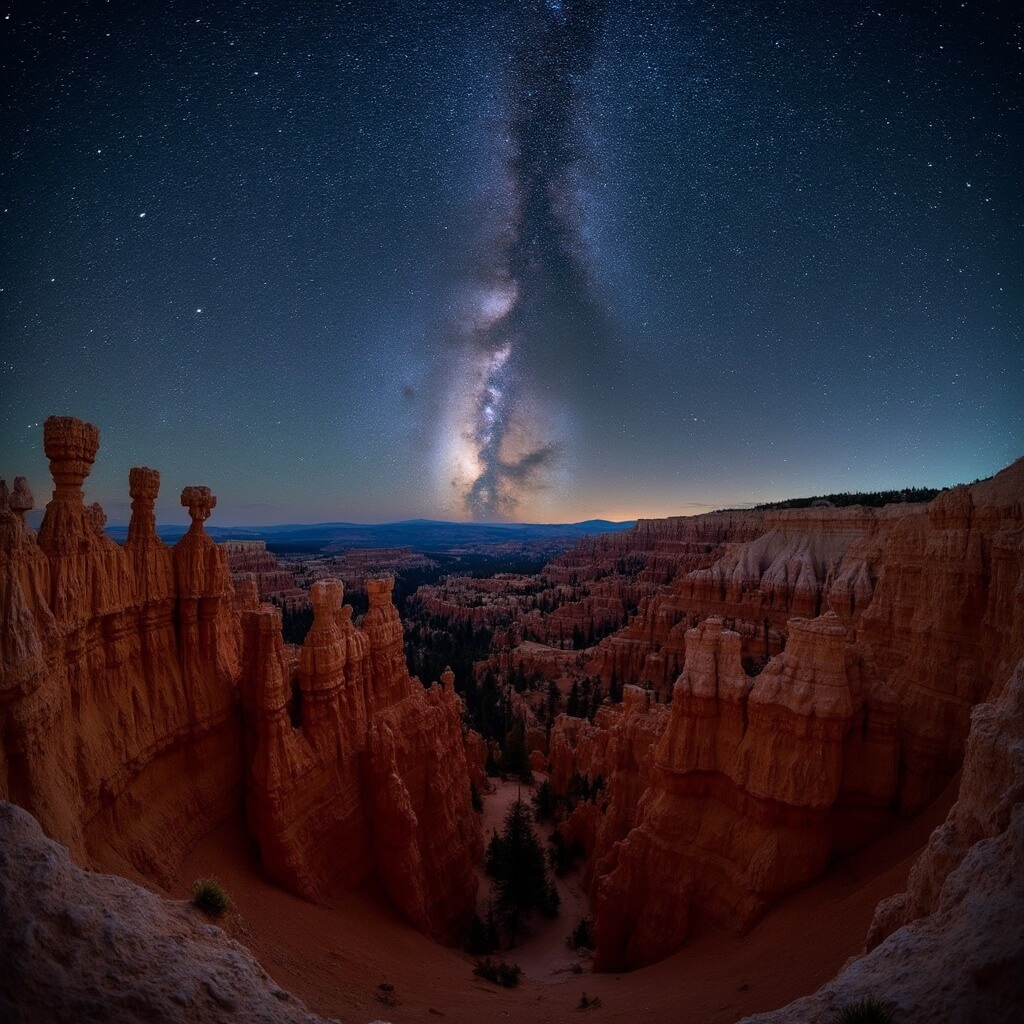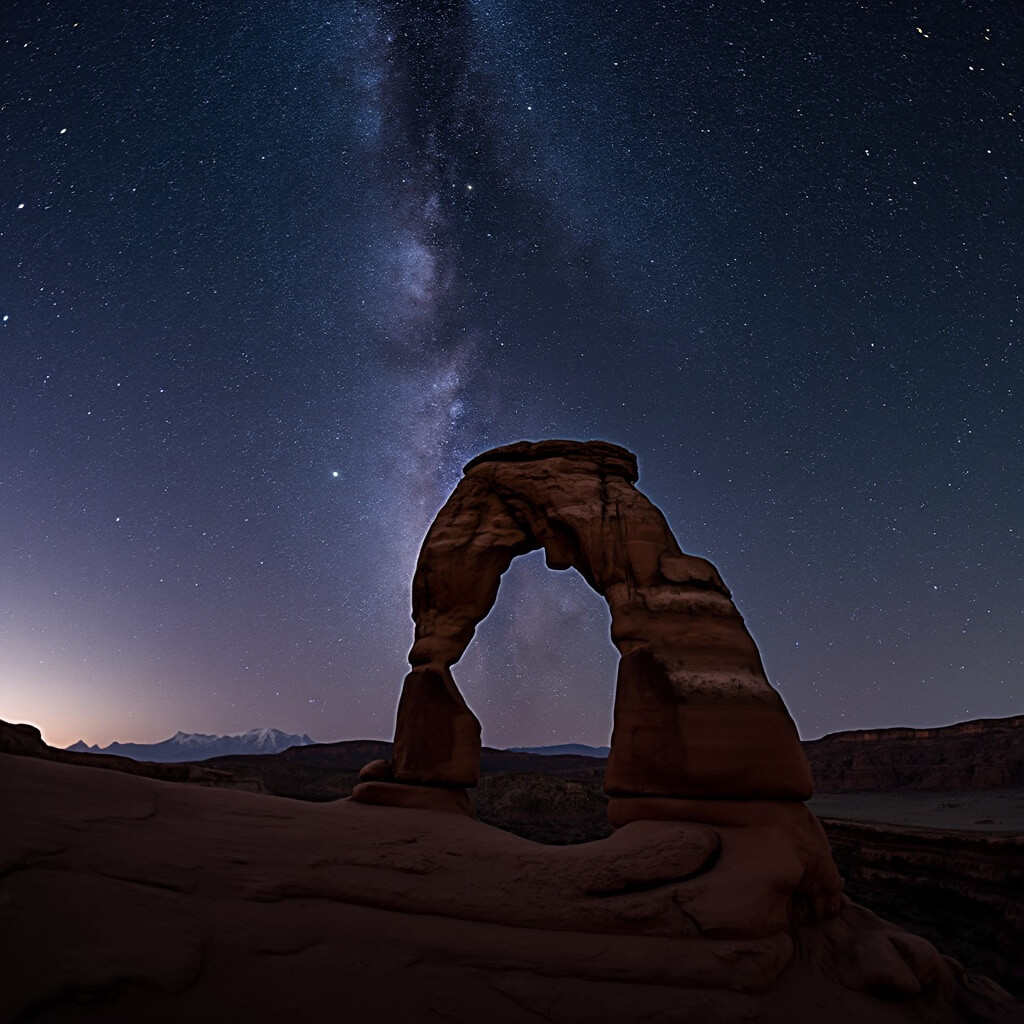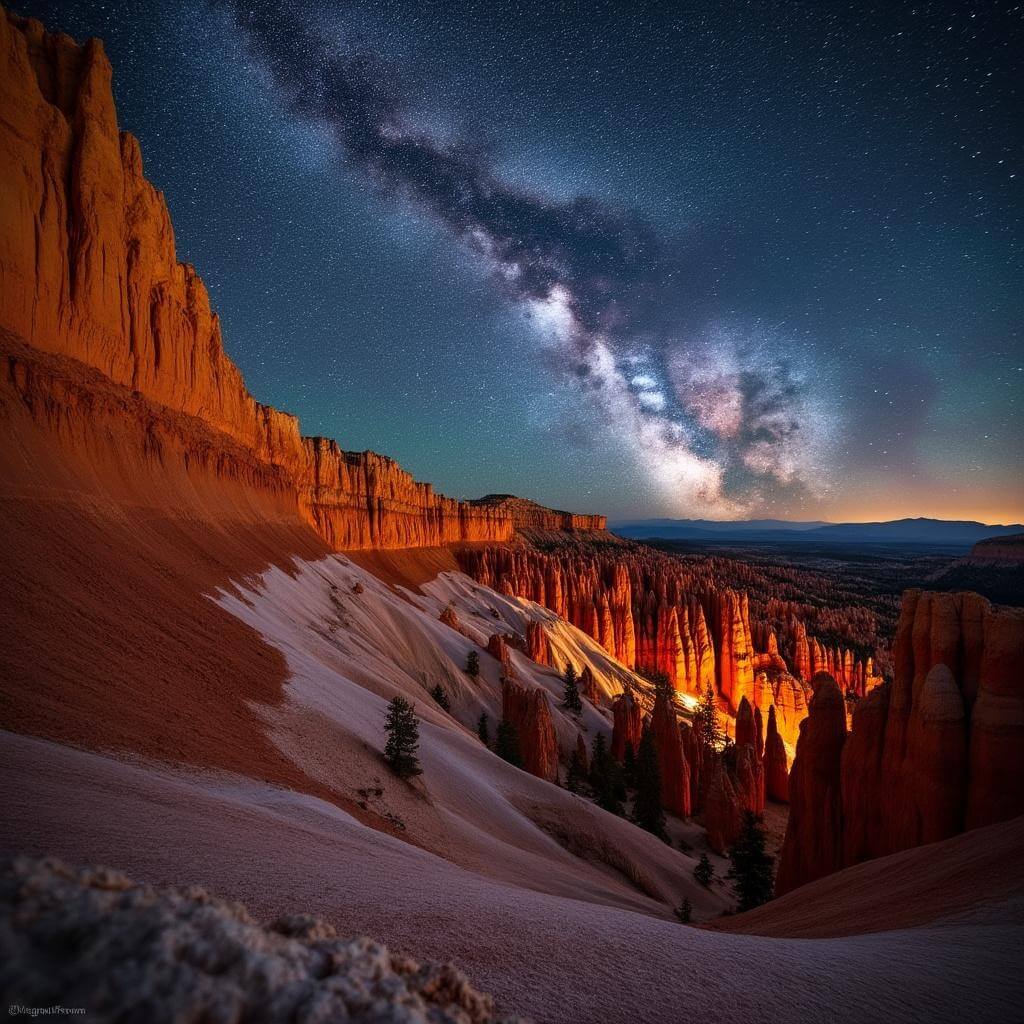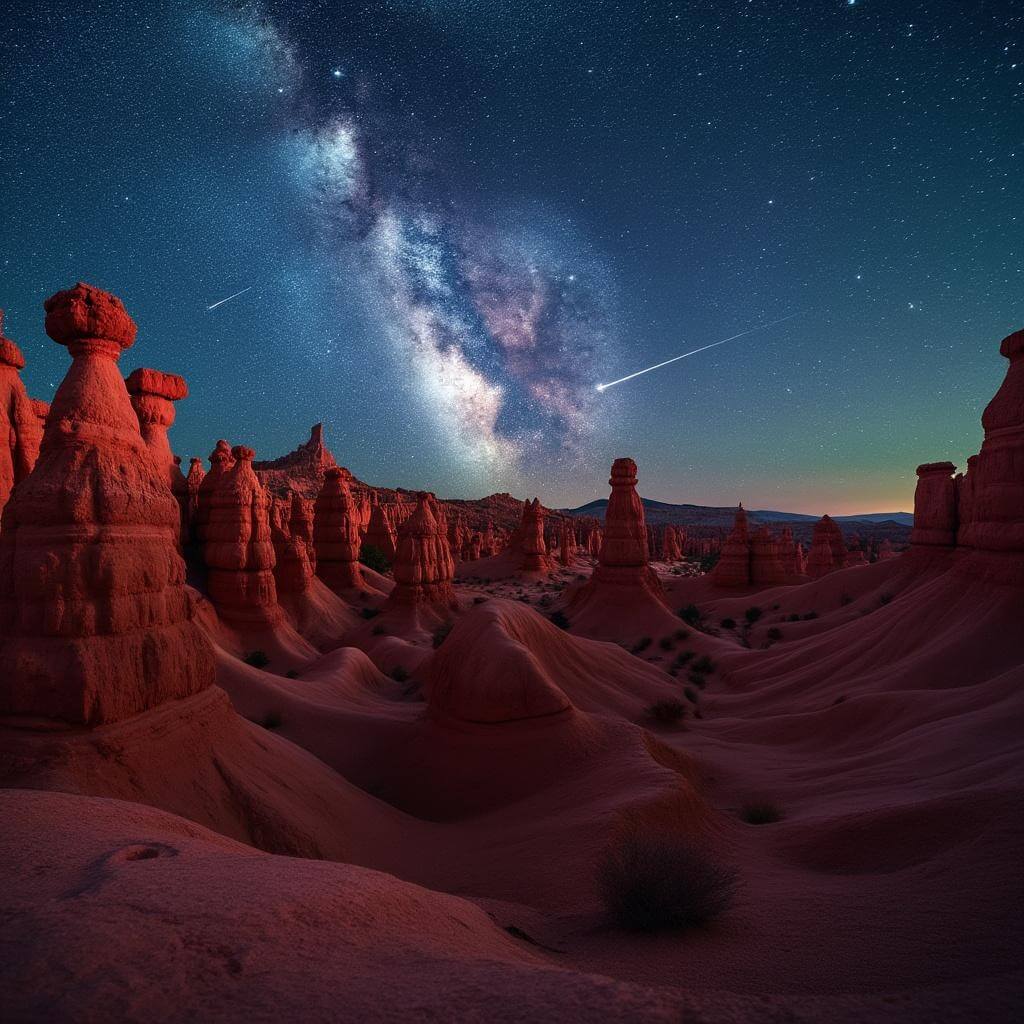Ever wondered where you could experience the most breathtaking night skies in America? Utah’s national parks are the answer—a stargazer’s paradise that’ll make your jaw drop faster than a meteor streaking across the heavens.
Utah holds the world record for the highest concentration of International Dark-Sky Association-certified areas. Five incredible national parks—Zion, Bryce Canyon, Arches, Canyonlands, and Capitol Reef—each boast official Dark Sky Park status. It’s like nature designed these landscapes specifically for astronomical wonder.
Why Utah? Picture this: Vast desert landscapes, high-elevation plateaus, and almost zero light pollution. These aren’t just parks; they’re cosmic theatres waiting for your arrival.

Bryce Canyon: The Crown Jewel of Night Sky Viewing
I’ll never forget my first night at Bryce Canyon. Standing among thousands of red-rock hoodoos, the Milky Way stretched above me like a glittering celestial highway. This park isn’t just a stargazing location—it’s the “last grand sanctuary of natural darkness.”
Must-Visit Stargazing Spots at Bryce Canyon:
- Inspiration Point
- Sunset Point
- Sunrise Point
- Natural Bridge Overlook
Pro tip: Arrive early, bring warm clothing, and prepare for an astronomical experience that’ll rewrite your understanding of night skies.
Arches National Park: Red Rocks Meet Stellar Backdrops
Certified as a Dark Sky Park in 2019, Arches offers something unique: iconic red rock formations that create mind-blowing backdrops for night sky photography.
Top Stargazing Locations:
- Balanced Rock Picnic Area (easy road access)
- Garden of Eden Viewpoint (remote, minimal light)
- Panorama Point (panoramic sky views)
Stargazing Hack: Give your eyes 20-30 minutes to adjust to darkness. Trust me, the visual payoff is worth the patience.
Canyonlands: Sweeping Vistas of Celestial Beauty
High-elevation plateaus provide unobstructed views that’ll make you feel like you’re floating among the stars. Notable viewing sites include Mesa Arch, Upheaval Dome, and Grand Viewpoint Overlook.
Safety First: Wildlife becomes more active after dark, so always stargaze with a buddy and stay alert.
Equipment Essentials for Your Dark Sky Adventure
Gear You’ll Need:
- Warm layers (desert nights get cold!)
- Red-light flashlight
- Binoculars or telescope
- Star chart or astronomy app
- Comfortable chair or blanket
One night, while camping near Canyonlands, I watched the Perseid meteor shower—over 50 shooting stars in one hour. No planetarium could match that experience.
Astronomy Programs: More Than Just Stargazing
Many parks offer ranger-led programs that transform your visit from casual observation to educational experience. Bryce Canyon leads the pack with one of the nation’s oldest and most comprehensive astronomy programs.
Don’t Miss:
- Star parties
- Night hikes
- Telescope viewing
- Astronomy lectures
Photography Tip: Those red rock formations aren’t just landscapes—they’re perfect foreground elements for astrophotography. Delicate Arch at Arches and Natural Bridge at Bryce are photographer magnets.
The Best Seasons for Stellar Viewing
While dark skies are spectacular year-round, late spring to early fall offer optimal conditions. Pro astronomers recommend checking lunar calendars—new moon phases provide the darkest, most vivid skies.
Wondering about meteor showers? The Perseids in August are a spectacular show you won’t want to miss.
As the night deepens and constellations dance overhead, you’ll realize these parks offer more than just scenery—they provide a portal to the universe’s grandeur. The real magic is just beginning to unfold across Utah’s cosmic playground.
Beyond the Big Five: Hidden Dark Sky Gems in Utah
Think you’ve seen all Utah has to offer? Not even close.
Lesser-Known Astronomical Wonderlands
Cedar Breaks National Monument sits like a secret astronomical observatory, just waiting for those willing to venture off the beaten path. At 10,350 feet elevation, it’s a stargazer’s dream that most tourists completely miss.
Hidden Dark Sky Treasures:
- Goblin Valley State Park (rock formations that look alien under starlight)
- Fremont Indian State Park
- Dead Horse Point State Park
Pro Navigation: These locations often have fewer crowds, meaning more pristine sky views and personal space for your celestial exploration.
Community: The Unsung Heroes of Dark Sky Preservation
During a conversation with a local park ranger in Torrey, I learned something fascinating: Dark sky preservation isn’t just about parks—it’s about community commitment.
Towns like Torrey have transformed themselves into Dark Sky Communities, creating region-wide light management protocols that protect astronomical viewing conditions. It’s not just conservation; it’s a cultural movement.
Dark Sky Community Impact:
- Reduced light pollution
- Enhanced tourism
- Scientific research opportunities
- Community environmental awareness
Planning Your Stellar Adventure: Practical Considerations
Spontaneity is great, but astronomical tourism requires strategic planning.
Essential Pre-Trip Checklist:
- Check park entry requirements
- Verify seasonal accessibility
- Research current astronomical events
- Pack specialized equipment
- Confirm local weather conditions
Insider’s Tip: Download dark sky apps like Dark Sky Map or StarWalk 2. These tools transform your smartphone into a portable planetarium, helping you navigate celestial landscapes with precision.
Challenges and Considerations: The Real Dark Sky Experience
Not everything is perfect in astronomical paradise. Let’s get real about potential obstacles.
Potential Challenges:
- Remote locations require self-sufficiency
- Potential weather interruptions
- Limited amenities in backcountry areas
- Seasonal accessibility restrictions
Beginner’s Guide: From Casual Observer to Night Sky Enthusiast
Everyone starts somewhere. Your first dark sky experience doesn’t require a Ph.D. in astronomy—just curiosity and preparation.
Beginner Stargazing Tips:
- Start with binoculars before investing in telescopes
- Learn 3-5 primary constellations
- Attend ranger-led programs
- Practice patience with night vision adaptation
- Join local astronomy clubs
Technology Meets Tradition: Modern Stargazing Tools
Astronomy has evolved. Today’s stargazers blend traditional observation with cutting-edge technology.
Must-Have Tech:
- Astronomy smartphone apps
- Portable telescope/binocular mounts
- Laser star pointers
- Lightweight tracking cameras
- Portable battery packs
The Future of Dark Sky Tourism in Utah
Emerging trends suggest astronomical tourism is more than a passing fancy. Utah is positioning itself as a global leader in dark sky preservation and experiential astronomy.
Emerging Trends:
- Increased inter-park collaborations
- More sophisticated astronomy programs
- Growing international recognition
- Enhanced astrophotography infrastructure
Learn more about Utah’s Certified Dark Sky Parks and Destinations to plan your visit to these unique locations.
Your Cosmic Invitation: Why Utah Matters
Utah isn’t just a destination—it’s a portal to understanding our place in the universe. Each park offers a unique window into celestial wonder, transforming passive observation into profound connection.
Whether you’re a seasoned astronomer or a curious first-timer, Utah’s dark sky parks promise an experience that transcends typical travel.
Your Next Step? Book that ticket. Pack those layers. Prepare for an astronomical adventure in Utah’s stargazing wonderland.
The universe is waiting. Are you ready to explore?











